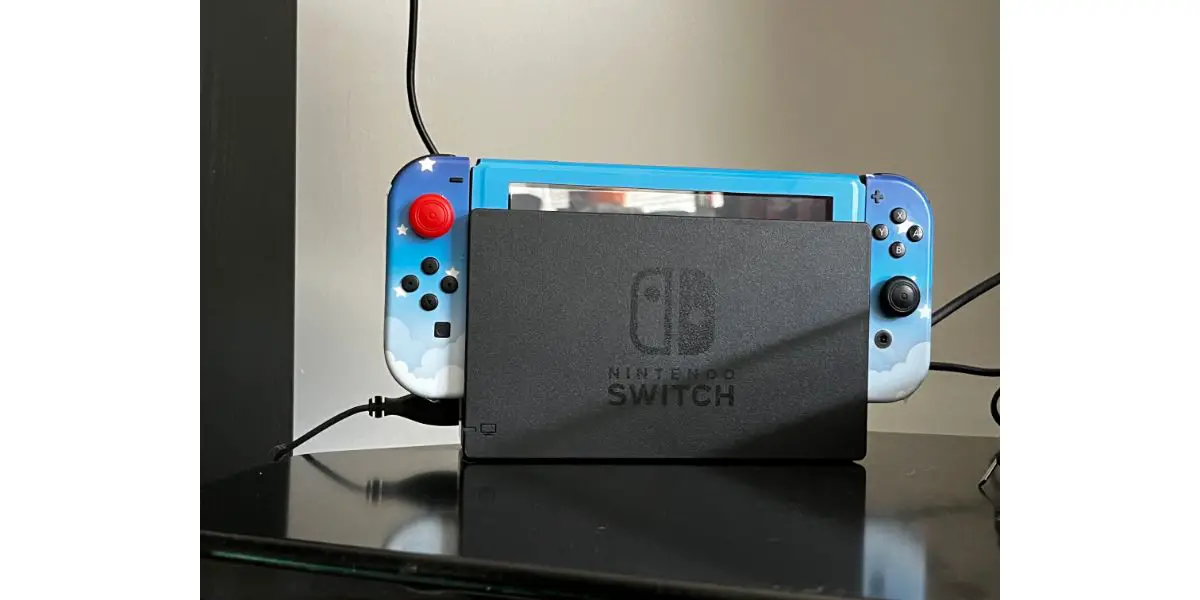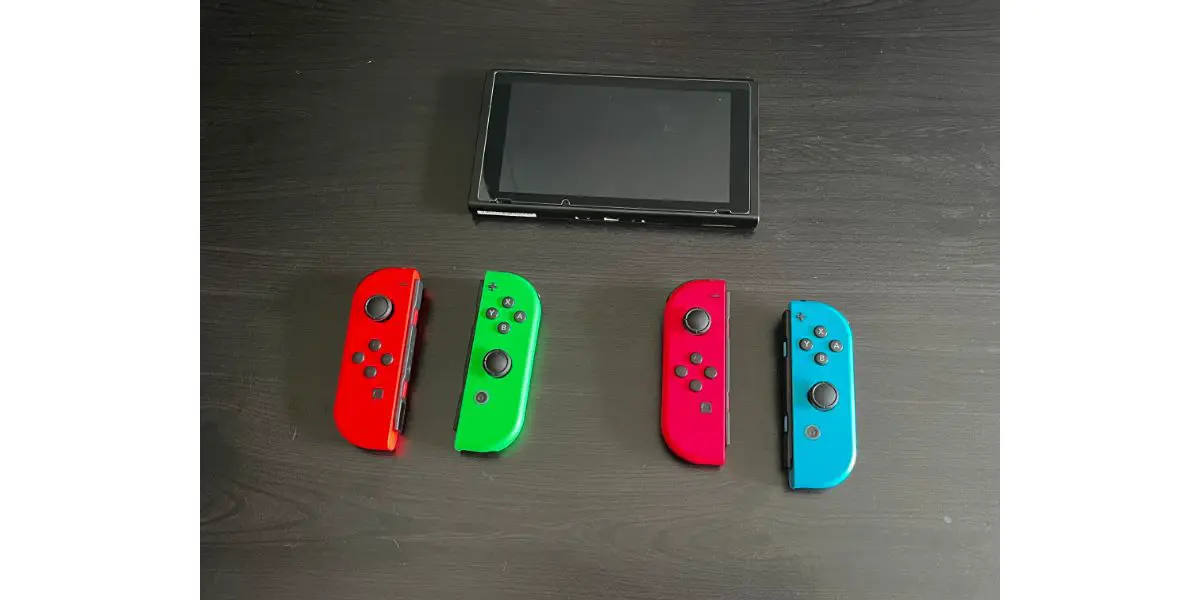Disclaimer: This post may contain affiliate links, meaning we get a small commission if you make a purchase through our links, at no cost to you. For more information, please visit our Disclaimer Page.
When a Nintendo Switch is making a buzzing noise, the common assumption involves the fan. This covers both console versions, the console/handheld hybrid and the Nintendo Switch Lite since both have fans for cooling purposes.
However, buzzing noises can come in a couple of other areas, such as the built-in rumble motors and the speakers. Nine times out of ten, buzzing sounds emanate from the fan but don’t forget that it’s not the only audible mechanism or moving part within the Switch.
Regardless of what’s causing the buzzing noise, we’ll cover the ins and outs of getting it fixed—including what you can do at home and if you have to take the system in for repair.
The Switch (Lite and Hybrid) is an incredible gaming system and we want you to get the most out of yours.
Table of Contents
4 Ways to Troubleshoot Nintendo Switch Making A Buzzing Noise
1. Improve the Cooling Factor
While the Nintendo Switch (Lite or Console/Hybrid version, amazon.com links) is not known for overheating, that doesn’t mean it can’t or won’t.
This is especially true if you are running a pretty demanding game and your Switch really needs a reset to clear the cobwebs so to speak.
The heat build-up inside the Switch is more than capable of causing a buzzing noise. Fortunately, the Switch, much like a gaming laptop, has external fan cooling options on the market.
You can approach this in one or two ways, depending on how old your Switch is and how much you’re willing to do to permanently fix the problem.
The first is to buy an external cooling fan (amazon.com link). These are USB devices that you can pick up from Amazon or other online retailers for a reasonable price.
All it does is connect to the Switch, with the blower hovering over the vent ports on the device, whether mounted or in your hands.
The second option is to remove your Switch and replace the internal cooling fan with a brand-new one.
This is a relatively simple process, but it might not be something everyone is comfortable with. Its the best option for those with aging Nintendo Switch devices.
2. Your Nintendo Switch is Getting Dirty
No matter how clean you keep your home, its almost impossible to avoid dust.
For one, roughly 50% of all the dust accumulating on a day-to-day basis is your own skin cells, along with everyone else that lives in your home with you. If you have pets, the dust accumulation is exacerbated.
While you can clean your home and dust on a daily basis, you can’t keep the stuff from getting up inside the Nintendo Switch. This is where a healthy dose of preventative maintenance comes in.
Anyone who owns anything more powerful than a smart coffee maker should have a compressed air can.
You don’t have to blast your Switch on a daily basis or anything but, if you want to avoid potential buzzing noises in the future, it’s a good idea to sit down and gently blow the vent ports and clean your Nintendo Switch.
On average, there are more than 150 species of microscopic organisms living on your hands at any given time. That equates to thousands of creepy crawlies you can’t see.
Much of that is transferred to your Switch every time you pick it up and it’s only a matter of time before this trade-off starts clogging up your vent ports.
Use Q-tips, dipped in isopropyl alcohol to keep your Switch clean and avoid buzzing sounds in the future.
Cleaning the Switch Internally
If you’re like most people and haven’t practiced much in the way of preventative maintenance, it’s worth opening the Switch up for a little internal cleaning.
If your Switch is experiencing a lot of buzzing, there’s a good possibility that it just needs to be cleaned up.
Keep in mind, you should only internally clean your Nintendo Switch after the warranty expires. Opening it up, in all likelihood, will void the warranty on the device.
Once you have it open before you, use the above-mentioned compressed air can blow it out, especially any dust or debris around the fan.
Be careful not to direct compressed air straight at any of the components. Instead, blow everything out from an angle.
3. Turn Off or Restart the Nintendo Switch
Buzzing noises coming from your Nintendo Switch may result from something very simple and restarts are a good way of setting a device back on a clean slate.
Of course, you can do this by simply holding the button down until the system powers down. No big deal, right?
When you turn it off, make sure that the system isn’t hotter than normal, something that (if it’s an abnormal thing for your Switch) could indicate the need for an external fan or internal fan replacement.
In a worst-case scenario, you might need to do a factory reset. It’s not the ideal option since a factory reset will delete your internal information and start you from scratch.
However, it may be your only option if you’ve physically inspected everything and you can’t find anything wrong.
- Power on the device or go to the Home Menu
- Select “System” from the scroll-down menu
- On the next menu, scroll all the way down and select “Formatting Options”
- Enter your PIN Code “If applicable”
- “Initialize Console” is the next item you need to select
- The Switch will present you with a lot of information on the next screen
- You can choose to read it or scroll down to the bottom and select “Next”
- On the final screen, select “initialize” to complete the factory reset.
In the data management section of the Nintendo Switch settings, you can select some of the information you would like to retain, if possible.
After the reset, you will need to reconnect your Nintendo account and start over, as if you just pulled the Switch out of the box for the first time.
4. Buzzing in the Joycons
This is fairly common as well. You might play a few games with no issues, wake up one morning, start the device, and discover a whiny vibration from the Joycon controllers.
In most cases, this is a matter of how specific games use the rumble feature within the Joycons and most of the time, the problem is fixed with a software update.
Your Joycons are supposed to update automatically but, if they don’t, you can check for an update on your own.
- Press the Home Button on your Switch
- Select “System Settings”
- Select the “Controllers and Sensors” option
- Select “Update Controllers” option
- The Joycons should update after this
Once you’ve updated them, return to the game you were playing and try them again. In fact, you should try them on different games because it could be that a specific game is causing the problem.
If the buzzing noise is absent on other games, you can narrow it down to just the one.
Final Thoughts on Nintendo Switch Buzzing Sounds
Buzzing sounds are fairly common in just about any gaming console at one time or another. In the vast majority of cases, its the internal cooling fan making all the noise.
A simple cleanup will often do the trick, though you may have to dig into the system if the warranty is already expired.
If none of the above troubleshooting tips does the trick, you’re probably dealing with something that Nintendo will have to fix and you should call their support line to see what your next option is.
On the bright side, you can help to avoid buzzing noises and faulty fans by keeping a cleaning routine. It will do a lot to extend the longevity of your Switch.


